Interview
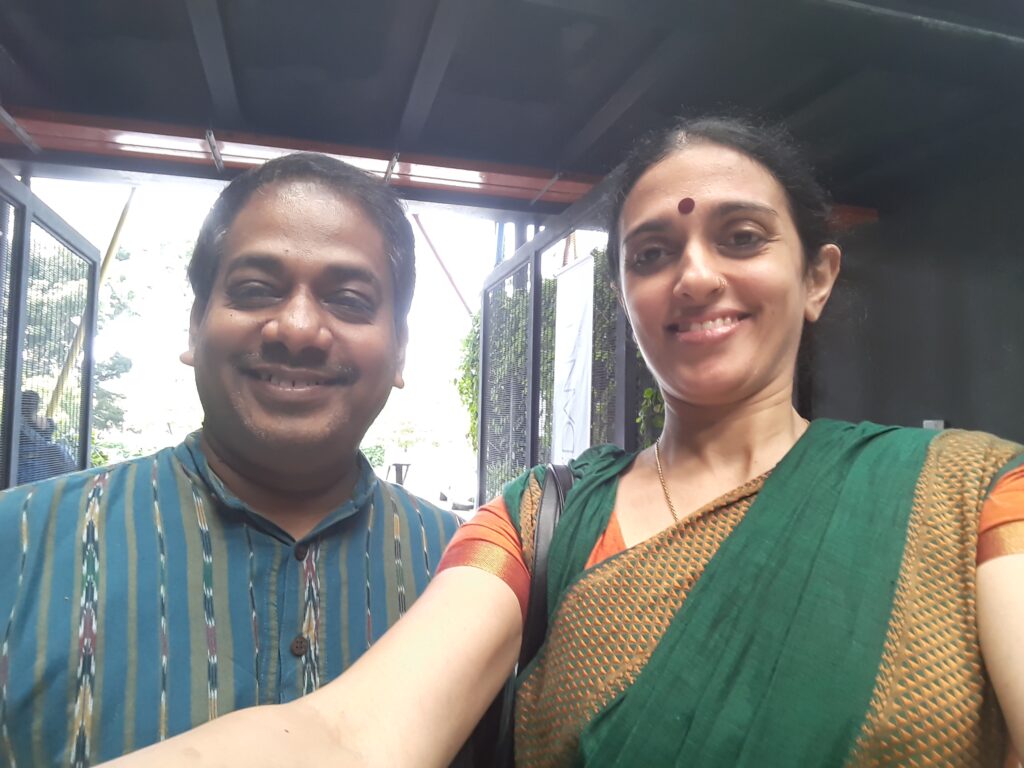
About childhood memories, lockdown reflections and questions on Bharatnatyam? A tete-tete with Anjana Anand By Vidhya Nair “It was simple. They were proud that a student from Singapore was studying at Kalakshetra, their alma matter. They spent an hour with me, walking around the campus. We went to various classes, they introduced me to others they knew in Kalakshetra. I’ll never forget Mami’s “Hi da, how are you?” She had tremendous warmth, a largess of heart which touched me,” says, Anjana Anand in this tete-tete with her childhood friend, Vidhya Nair.When we reach life’s mid-point, it’s important to look back, ponder, reflect and move forward. Anjana Anand is one such artiste who often revisits and reconfigures as she navigates through life. We first met as Malayali teenagers in Singapore, engaged in girl-talk and school banter so this conversation was a meaningful stock-take of how growing up with dance and becoming a dancer came to be. We met up over Zoom and this is how it all transpired. VN:Where are you really from, Anjana? AA: Ha-ha! The most daunting question I’m often asked! I was born in Mysore, my parents are Malayali, although I never lived in Kerala, then we moved to New York, then Singapore when I was 12 (PSLE year!) and I studied at both a local school and United World College (UWC) for 2 years and then to Kalakshetra. So, lots of unconventional moves. In the early years, I have fond memories in Mysore with my grandmother. In New York, my elder sister (Anuradha) and I were placed in a Greek orthodox convent so by the time we came to Singapore, we both spoke Greek fluently yet, we still able to adapt to a new environment. VN: How did dance get introduced? AA: First in New York with Mallika Parthasarathy. It was very informal, in basements of apartments on Sunday. One of my earliest memories was learning “Kamalalochana” (Meera Bhajan). These were gatherings of young mothers who amidst bringing pot-lucked food, engaged their children in these cultural corners while braving snow and ice. Kudos to my mother and her perseverance! For me, proper dance training began in Singapore at SIFAS. The formalised structured learning with Uma Rao initially and then with Shanta Ponnudurai. I recall that all my time outside school was at SIFAS. It was like a Gurukul. Those rickety steps at the Balestier Road campus! I loved my time there. It was a real grounding which also opened up my exposure to music through the visiting artistes we encountered there. By the 9th standard, I had decided to go to Kalakshetra. My parents were hugely supportive. My father being a doctor, was keen that we should not pursue medicine. He felt the arts is the best place to feel fulfilled and they were a huge encouragement. My sister too learned the mridangam and my mother having learned the Veena and lived as a part-time student at Kalakshetra, all this made these decisions uncomplicated for me. VN: What were your earliest memories of dance classes?AA: In New York, I loved the family environment, aunties in the background making food. At SIFAS, it was the timing, systematic syllabus, the well-dressed saree-clad teachers, it used to hold us in awe. The rigour of the class, methodical way of learning, treated in all seriousness. There was no opportunity to be bored with the discipline. VN: I can so relate to that. Tell me, how did you come to encounter Apsaras Arts and its people? AA: I first met Aravinth (Kumarasamy) in Chennai in 2010. He has since become a true friend and guide. We had initially connected through FB and met after a program at Krishna Gana Sabha. I had known of him in Singapore but never personally. Even Neela Mami, I knew of her in Singapore but there was no interaction. My earliest memory of her was in my 2nd year at Kalakshetra when I was suddenly called to the office because I had overseas visitors. It turned out to be Neela Mami and Satyalingam Mama. They were the sweetest. I was taken aback why they wanted to see me. I had been a SIFAS student, they are Apsaras, why had they come to see me? It was simple. They were proud that a student from Singapore was studying at Kalakshetra, their alma matter. They spent an hour with me, walking around the campus. We went to various classes, they introduced me to others they knew in Kalakshetra. They were shooting for their own show at Kalakshetra. I’ll never forget Mami’s “Hi da, how are you?” She had tremendous warmth, a largess of heart which touched me. When I came later to Apsaras Arts later, I reconnected and enjoyed her mentorship in the work I did in Singapore. Aravinth in our first meeting, offered and invited me to be the Guest Choreographer for his new production, “Nirmanika.” At this time, I had completed my Masters in Dance at Bharathidasan University (she had earlier completed her B.A in Music from Madras University) and I was mostly a solo performer. To take up the challenge of group choreography, it was a major breakthrough. I enjoyed working with him and the team at Apsaras Arts. The approach was systematic and a tremendous learning experience for me. The faith that Aravinth had in me to first chose and recognise me is still unforgettable. I was thoroughly impressed with the group of dancers I worked with. I had by then left Singapore for a decade. To see these working adults attending rehearsals straight after their day jobs and staying to practice up to 11pm nightly and then return to their job the next day astounded me. To see this level of commitment with part-time dancers was amazing to observe. In Chennai, you only saw this with fulltime dancers. VN: In your career, what are some of the significant dance performances you have been a part of? AA: There have been several significant performances that has made a difference in my life and introduced
Interview with Thiruchittampalam Ramanan
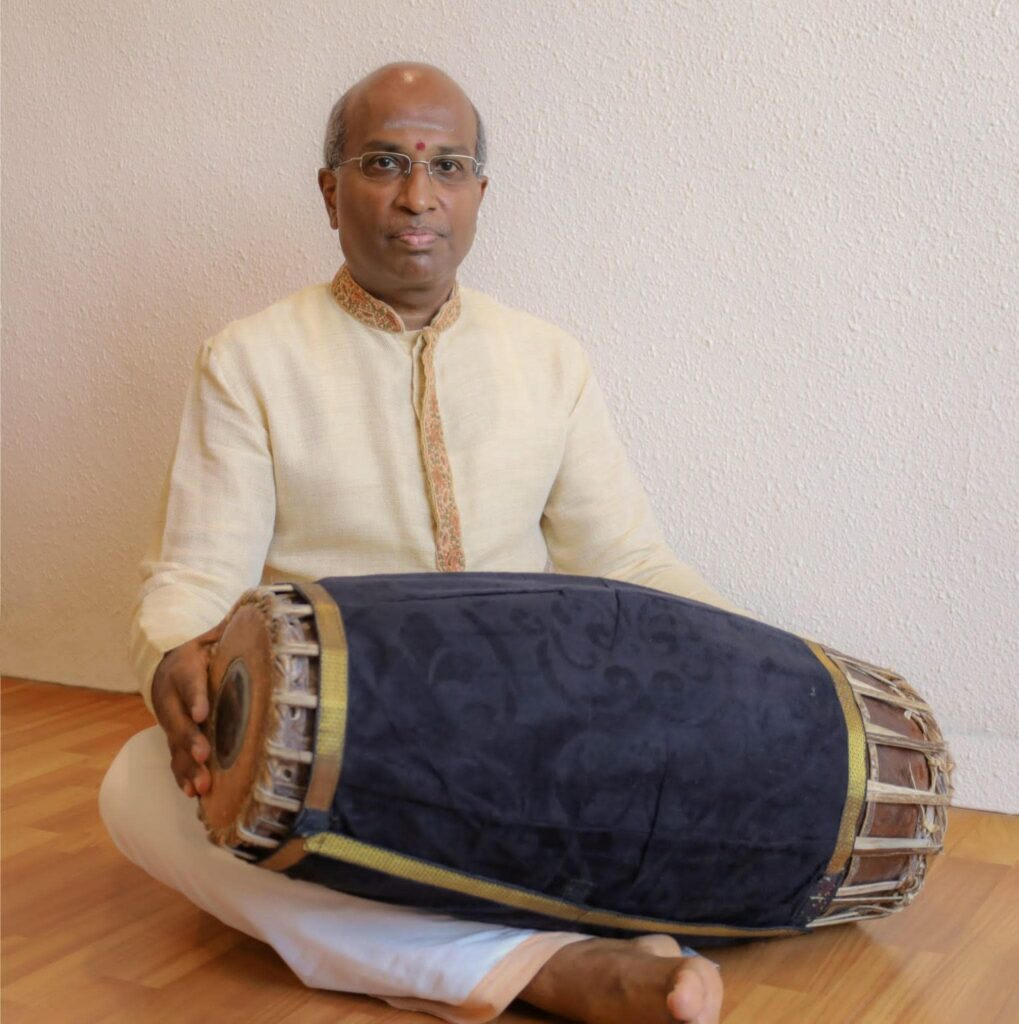
An Interview with Thiruchittampalam Ramanan, considered the Pride of Singapore, a mridangist with over 1500 programmes, in his kitty : By Vidhya Nair Let us start from the very beginning. Tell us about yourself and your family I was born in Malaysia in the 1960s. My father worked for the Malaysian railways and married my mother who was based in Singapore. Eventually, our family settled in Kuala Lumpur (K.L) where I studied before permanently moving to Singapore in the 1980s during my teens. How did you come to be introduced to Carnatic music and the mridangam? Who nurtured your interest? It started with my maternal great-grandfather, Arumugam. He loved Indian Classical music. After he heard that the Music Academy was opening in Madras (now Chennai), he quickly relocated himself from Malaysia to Chennai in the 1930s. He bought a house close to the Academy so that he could attend concerts regularly. He made a serious commitment to study and learn as much as he could.As a retiree, he pursued this knowledge by befriending all book publishers ensuring he would receive the first copy of the first release of any book in the Carnatic Music genre. This resulted in him having a huge collection of rare and acclaimed Carnatic music books. Subsequently, much of his collections were donated to the Music Academy Library in Chennai. He also named his child, my grand uncle, after a famous music composer, Saint Tyagaraja.Although the ancestral roots of my family began in Jaffna, I only visited Jaffna when I went on tour with Apsaras Arts six years ago. A Shiva temple connected with my family still stands in our ancestral village there. I met my wife, Sarada when we were both active in the Singapore Indian Orchestra & Choir (SIOC). She sings and also plays the violin, veena and sitar. My two daughters are also pursuing Carnatic vocal and my elder daughter learnt Bharatanatyam. I am grateful to my family for supporting me to pursue my passion in mridangam. How did you come to learn the mridangam? Tell us about your early learning and teachers? From a young age I was exposed to both Carnatic music and Bharatanatyam. My mother and her sisters learnt both art forms from early classical arts stalwarts of Singapore. They were the pioneer batch who learnt music from the late Pandit Ramalingam together with Vijayalakshmi Sharma and the late V Ramachandran. They also learnt Bharatanatyam from the Bhaskar’s. My grandfather, Dr Balasingham, a pathologist was a patron of the arts and was instrumental in helping K P Bhaskar to perform in K L back in the 1950s. In the early 1960s, my father was posted to Ipoh where he was the President of a local temple. He had the opportunity to learn mridangam soon after he arranged for a mridangam teacher to be brought to Malaya from India. I was drawn to my father’s mridangam at home and used it to accompany my grand-aunt who would sing at home. I was fascinated by its dynamic sound and my interest developed in this nurturing environment. My father further kindled my interest in mridangam by taking me to concerts regularly. I recall watching Madurai Somu and Dr Balamuralikrishna when they performed in K L in the 1970s. We would try to meet the musicians and interact with them. I began learning formally at the age of 12 under a loving guru Thangavelu Vattiyar. In 1980, Flute N Ramani came for a concert in which Karaikudi Krishnamurthy accompanied as a mridangist. My father and I met them and I insisted that I wanted to learn from Krishnamurthy sir after hearing him play. My family encouraged me to continue taking lessons from him throughout my school years. My elder sister became a full time Bharatanatyam teacher with Temple of Fine Arts, Kuala Lumpur till today. Our family treated this pursuit as a divine art, a gift to be nurtured and supported. Several members of my extended family have gone on to pursue music professionally and are promoters in Kuala Lumpur, Perth and elsewhere. Karaikudi Krishnamurthy, your teacher. Share with us your learning years with him? When I met him in 1980 post concert, he told us he had just taken up a position in SIFAS and asked me to take classes there. My father agreed to send me to Singapore. As my father was a Railways employee, I could get free train passage. Initially during school holidays and weekends, I would take the train down on my own and attend Krishnamurthy sir’s classes. As a mridangam student, I would have classes for long hours throughout the day and eventually stayed with sir. He cared for me like his own son and was very loving. SIFAS was at Norris Road then and there weren’t too many students. I was fortunate to meet many Carnatic music stalwarts who performed in Singapore including artistes like K V Narayanaswamy, M L Vasanthakumari, T N Seshagopalan, Dr N. Ramani, Dr L Subramaniam and many more.Krishnamurthy Sir was an amazing and dynamic teacher. He taught spontaneously. He organised many programmes himself and was an active performer both in Singapore and Malaysia. He created korvais in impromptu and taught them along the way to a concert. He expected me to perform what was taught even at these last moments. Over time a group of us formed, my peers were Paskaran, Selvapandian and Devarajan. As I was often called on to practice and perform very regularly, I realised I was in a unique position. Upon Krishnamurthy sir’s insistence, I was exempted from paying fees to SIFAS. I learned under him till he left Singapore in 1988. Apart from playing alongside him on Ghatam or Kanjira at his regular concerts, I was often encouraged to perform as a solo accompanist. Every experience was a lesson in itself. As his live-in companion, he cooked and took care of me. He knew how to motivate; give you challenges and keep you on your toes
INTERVIEW
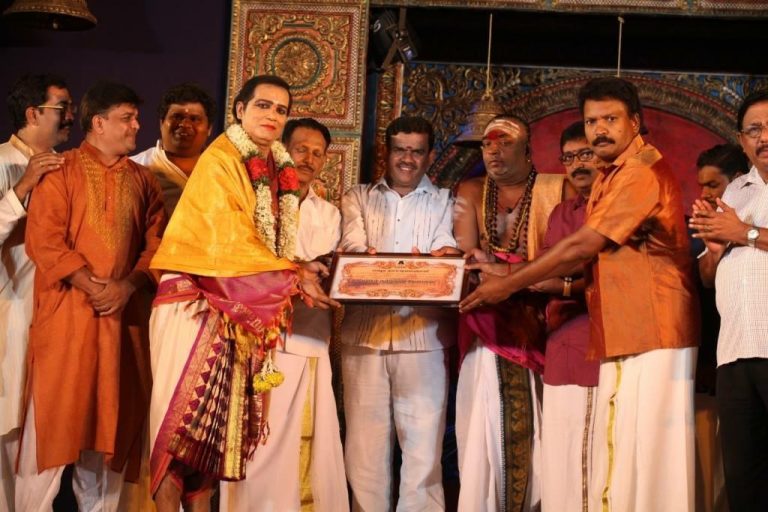
V Balakrishnan, Singapore-based dancer, shares his life’s journey with Bharatanatyam in conversation with Vidhya Nair How did you first become acquainted with the world of dance? From a very young age, I accompanied my mother, an avid film-goer to the cinemas. As the only son amongst five daughters, I was her pet. I responded to colours and music early on and my mother tells me that I was a natural dancer. The movies were and still are a great source of inspiration for me. In my younger days, to be a male dancer was considered a taboo. At school, I was active in all things arts. I sang tenor in my school choir without any prior training and acted in a number of English musical dramas – Love Boat, Andy, Get your Gun, Dance with Waltz, just to name a few. My father was aware of my interest and talent but insisted I focus on my academics. He wanted me to land a stable government job, settle down, have children and build for myself a typical middle-class life. It was unknown to us then that my life would not fit with their original expectations. Your first career was in the media. Was this how you came to be acquainted with classical dance? Yes. I am a media veteran. I worked for the RTS (Radio & Television Singapore, later Singapore Broadcasting Corporation then Mediacorp) from 1976 till 2006. I first encountered established dancers who would come in for a live recording. I was fortunate to be assistant director for a number of recordings, thanks to my avid interest in music, staging, lights and camera. I met Lakshmi Viswanathan, Chitra Visweswaran, the Dhanajayans, Anuradha Jagannathan, Srividya, our own Madhavi Krishnan and Balagopalan of Kalakshetra. Luckily for me, Balagopalan had taken up a stint in SIFAS, so I requested him to accept me as his student. This was way back in 1977. He accommodated me and I took individual classes with him at 9pm. I learned Thattadavu and Nattadavu from him. Unfortunately, this didn’t last long as he had to return to India and around the same time, my father suddenly passed away. I was only 23. It turned out that he had liver cancer which had remained undiagnosed. Looking after the family became my sole responsibility. My younger sisters were still in school. Between my mother and I, we looked after the family. I couldn’t continue to learn but there was a fire in me to find a way, somehow. How did you find a way to learn Bharatanatyam? It was a coincidence that I came to be introduced to Swami Shantanand Saraswathi (Swamiji) in 1979 whom I was drawn to instantly. I started to attend his regular Akhanda bhajan sessions. There, I had the opportunity to choreograph and dance. In 1981, when Swamiji founded Kala Mandir in Singapore and Kuala Lumpur, I began dancing in their earliest production – Dattatreya – where I performed Jatiswaram for a song based on Lord Muruga. It was there I came to be acquitted with Mrs Shanta Bhaskar who was a faculty member there and we performed on stage together too. In 1986, I met Neila Satyalingam (Maami). I was instantly drawn to her; she was confident and glamorous. Her first lesson was Khanda Alarippu. I had no idea what it was. I had to take help from others. That’s how I learned my Bharatanatyam. To learn the basics as an adult, it was very difficult. By this time, I had already received vocal Carnatic training lessons with K S Ganapathy and Nageswaran at Kala Mandir and spent a month with Karaikudi Krishnamoorthy learning the basics of the Nattuvangam. I had also taken classes in Sanskrit at the Ramakrishna Mission. My career in media was also steadily progressing, I was producing artistic shows, working with many individuals and arts groups; my network was growing. This gave me the motivation to pursue Bharatanatyam seriously. What was it like being a student and performer with Maami and Apsaras Arts? My most influential teacher was Neila Maami. I continued to learn with her all the way till 2006. As she was teaching with Apsaras Arts and People’s Association, she was actively creating many shows and productions. The need for male dancers became necessary for the many character roles Maami had envisaged. I introduced Maami to many promising young male dancers – Charles, Manimaran, Moorthy, Guna, to name a few, and later on, to young G Selva and Veshnu, all of whom came to be part of Maami’s many productions. Maami offered us training and exposure along with many of her Kalakshetra contacts who came to Singapore to teach. Some of my most memorable lessons include sessions with Shanta Dhananjayan. In an individual class, I learned the Keerthanam, Aananda Nadamidum Padan. Just by her singing line by line to me, I absorbed the piece quickly. I put that piece to practice swiftly with a performance alongside Suganti and Jayanti Kesavan.Shanta Dhanajayan also taught me the Varnam, Mayam Edho Swami. All the intricate nuances in a week, I still hold dear until today. I learned from Maami, Swami Naan Undan Adakai with recorded music, and later many of Adyar Lakshmanan’s choreographic pieces. All of these items I have performed over and over again at temples with the voices of Satyalingam Mama and Mohana Harendran in live recitals. My love for live music for a recital was set. I also learned from Krishnaveni Lakshmanan when she visited to teach us as well. Learning this way and performing regularly seasoned me as a performer and my deep love and appreciation of Carnatic Music and the Tamil language helped me establish myself as a familiar and regular performer at temple festivals and on television. I recall a lesson in 1986 with Maami when she was teaching Ananda Nadamaduvar Thillai. The experience was so surreal, I felt Lord Nataraja had come himself to teach me. The lyrics consumed me fully and on that
Interview
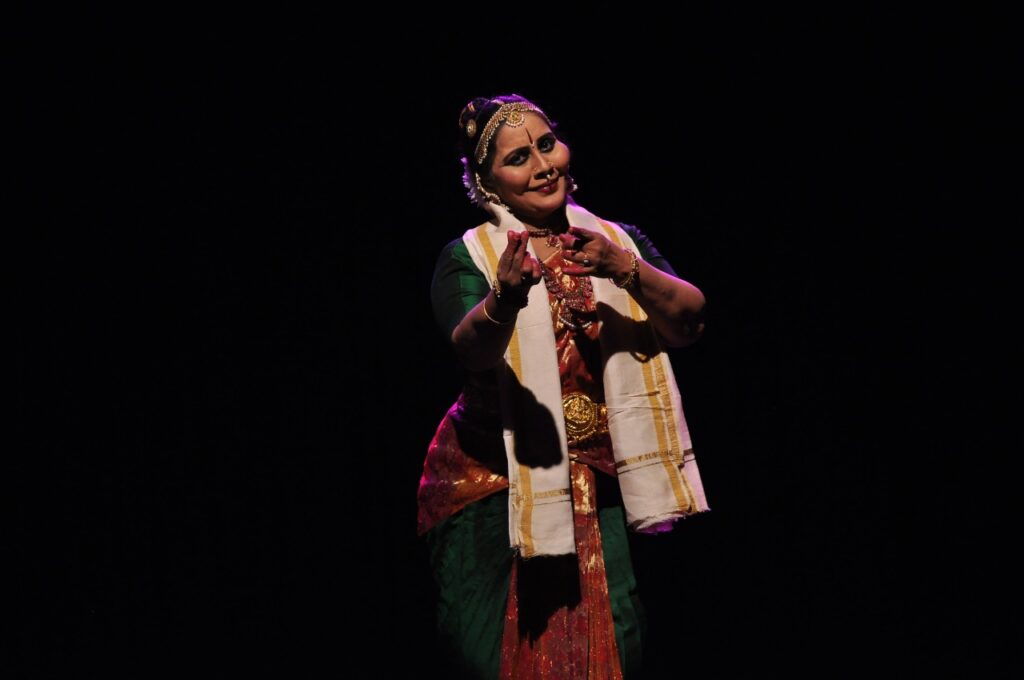
Moments like these… Acclaimed Bharatanatyam artiste, Parvathi Ravi Ghantasala shares why working with Apsaras Arts and Aravinth Kumarasamy has been a blessing in her life. Please talk to us about your association with Apsaras Arts and Aravinth Kumarasamy? My association with Apsaras Arts and Aravinth began about 20 years ago. I was very busy then with a hectic performance career. One of those times, Aravinth’s mother watched my performance, and wanted to get in touch with me. I came to know through my mridangist, Nellai Kannan that someone in the audience had liked my dance very much and wanted to talk to me. I didn’t know who it was. Many years passed… And then, once when we were in an ABHAI meeting many years ago, Aravinth came to see Dr Padma Subrahmanyam, Padukka as we call her. I was introduced to him and that is when he said, my mother used to love your performance and always wanted to talk to you. I was thrilled. It was like a reunion of sorts. We began a conversation and I visited Singapore and that is where it all began. Aravinth invited me to collaborate on his project – The Heroiens of Raja Ravi Varma. He structured it for me and lent me great support in terms of choreography. I felt a lot of comfort with him. The production turned out beautiful. And there has been no looking back, since. We are like family. Bonding with Apsaras Arts and Aravinth has been a great blessing for me. What was it like to collaborate with Apsaras Arts on the heroines of Raja Ravi Varma? All the dancers who were a part of the production were well-trained and disciplined. The costume designing was done by Neila Mami ( Neila Sathyalingam) and later by Mohanapriyan and Aravinth. They have a very good sense of aesthetics and bring nuance to their productions. I had a lot of fun in their company. It was a very friendly environment. They are all very sincere, hard-working and confident people in general and I must say that I learnt a lot being with them. We exchanged views, thoughts and a lot on the choreographic process. Tell us about how it was to present Apsaras Arts and Priyan’s solo at your prestigious Kala Pradarshini festival? The production on Raja Ravi Varma was first premiered in Singapore by Apsaras Arts at the Esplanade Theatres on the Bay in 2011. This premier season of 3 shows was well received. Later, I invited them to perform this as part of the Natya Festival by my dance company, Kalapradarshini. I still remember we had a packed audience and many from the Chennai dance fraternity were present. Aravinth also introduced me to other dancers and teachers in Singapore. I had the opportunity to present one of mt iconic production “Ucthithialagam” working with the Kesavan Sisters and their students at Bharatha Dance Academy in Singapore. Mohanapriyan also performed a solo for the Kalapradarshini festival, with Aravinth on the nattuvangam. This was one of his early solo performance in Chennai. Mohanapriyan and I performed together for the Brahmakumaris in the presence of all the Matajis and the then for the Governor of Tamilnadu. We did the Geethopadesam in which he was Krishna and I was Arjuna. It came out very well. We also performed another program, Krishna Madhuryam at the Bharatiya Vidya Bhavan. So this association has been going very steadily to this day. Mohanapriyan is a wonderful choreographer and beautiful dancer who you can keep watching for hours. Apsaras Arts has groomed him very well. What are some of your strong impressions of Neila Sathiyalingam Maami? Neila mami was a great humble soul. She was a wonderful guru with a motherly touch. That love was always visible in her eyes. She showered a lot of love on everyone. Honestly, you cannot say she is no more, as she is still living inside us. Her eye for beauty and creativity was inspiring, she could recreate the costumes and adornments painted by Raja Ravi varma, to dress the dancers, as if the painted heroines came alive. As a senior veteran choreographer and guru, Neila Mami encouraged me and also was humble to let me choreograph on her students. She introduced me to senior dancer Roshni Pillay Kesavan in Singapore and I had the opportunity to work with her in choreographing the role of Damayanthi for the Raja Ravi Varma project. We used to meet her every time she visited Chennai. For all this, I should thank Aravinth, who takes great pains to come and visit me every time he is in Chennai. He is able to connect with so many people. In terms of artistic values, what are some of the things you think Apsaras Arts productions stand for? To witness one of their productions, I flew to Singapore. The stage, the sets, the music, the choreography, the dance… It was a live show and I wish I could watch it all over again. The ballet was truly mind-blowing. Dr Rajkumar Bharathi had composed the music which was wonderful. It looked like I was in the heavens and watching this production.
Interview
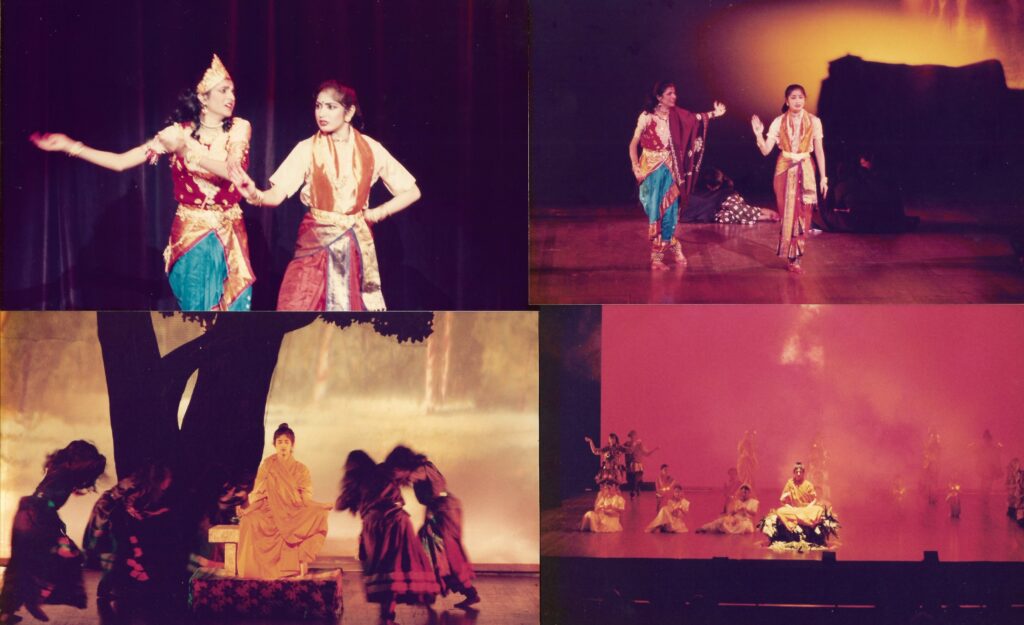
Passion, perseverance, gratitude and a sense of continuity mark Kuchipudi dancer-choreographer-teacher-curator, Rajyasri’s career in dance; she traces her journey as a student of dance, her life in Singapore, and how she continues to engage with dance, based now in Bangalore You were in Chennai recently for an Apsara Arts show. How did it feel to be in Chennai? In a way, this is where it all began for you right? Visiting Chennai is always nostalgic. This is where I spent my childhood and adolescent years. My parents and in-laws lived in Chennai as well for many years after I left, so returning to Chennai always felt like home in some sense. This city holds many fond experiences and memories that are significant to me such as my education and of course, dancing, which I started and grew to love while growing up there. In the land of Bharatanatyam, what drew you to Kuchipudi? Talk to us about your early days of training. My mother was very fond of the arts and wanted her daughters to experience a variety of their forms. Although I started off learning to play the veena at first, my heart was not entirely in it and my fascination was always with Indian classical dance. When my mother realized this, she eventually had me pursue this passion by enrolling me in dance classes. This was when my experience with dance first started. Although we lived in Chennai, we hailed from Andhra Pradesh, so it just felt natural that I wanted to learn Kuchipudi, the dance form which originated from our home state of Andhra. Dr Sri Vempati Chinna Satyam, fondly known as Master Garu, was the pioneer and founder of Kuchipudi in Chennai, and through his dedication of spreading this dance form, he established the well-known Kuchipudi Art Academy in T Nagar in Chennai, which is the dance school I attended. Tell us about your guru and what are some of the key learnings from him in terms of dance and life? Kuchipudi was mainly conducted in the format of a dance-drama, and only male dancers performed all the characters. Master Garu was the one who encouraged female dancers in Chennai and was dedicated to making Kuchipudi inclusive to all dancers. He would never force or chase his students to pay their dance fees, as he strongly believed that art should be taught and spread, but never sold. His devotion to the arts resulted in his achievements of numerous titles and awards such as the Raja Lakshmi Award of Madras, the Kalaprapoorna from the Andhra University, the Kalaimamani award given by the Government of Tamil Nadu, and the National Award from the Central Sangeet Natak Akademi in New Delhi, to name a few. His popularity grew within the United States as well, where he was given the Golden Key to the cities of Miami and Atlanta. His discipline and commitment were just some of the qualities that most of us learned and embodied in our daily lives. From his humbleness, to his compassion, his kindness to his warmth, Master and his wife always ensured that his students were cared for and we respected each other like family. I believe these are the traits which greatly influenced us while under his mentorship, and are the same characteristics I continue to employ in all areas of my daily life. What was the dance community in Chennai like when you were growing up? Bharatanatyam was the only well-known art form while I was growing up. Master, along with his senior students, had to struggle initially in introducing Kuchipudi to the dance field. Their hard work paid off when the Kuchipudi Art Academy produced over 12 large-scale performances, and each production received great reviews. Senior students like Shobha Naidu, Manju Bhargavi, Bala and Anupama were some of the senior students who dedicated themselves to helping spread and develop Kuchipudi in and around Chennai. Within two years of learning under Master, some of my classmates like Madhavapeda Murthy, Satyapriya and I got the chance to perform in a few of Master’s productions and also travel with him and his senior students for solo performances. However, while studying full-time in college, it was not possible for me to completely dedicate myself to dance. I did, however, participate in several inter-college art competitions and together with Jayanthi Subramaniam and Roja Kannan, we won several competitions for our college. Through the growth of the Kuchipudi Art Academy, and its numerous productions, Master was looked upon as a dance guru and choreographer par excellence, and a legend in this art form especially after his award-winning achievements. What took you to Singapore and how did you feel when you arrived? When I got married, my husband Murali was already working in Singapore. It was my maiden international trip and I was very nervous. Leaving family, friends, and dancing behind and moving to a totally new environment was overwhelming at first. However, with the love and support of my husband, in-laws and the friends we made from our cultural communities, I settled in quickly. You are responsible for taking Kuchipudi and popularizing it in Singapore. How did it all begin? Before I shifted to Singapore, my guru had attended a dance program in Singapore, where he met with several organizers from the dance industry. He spoke to them about me and mentioned that I would be settling in Singapore and was capable of teaching Kuchipudi. When I moved to Singapore in June 1981, I wanted to pursue my studies further before taking a full-time job, but I had to wait for my Permanent Residence status first. So, in the meantime, I met Mr and Mrs Bhaskar at a performance and they offered me a place to start my classes. Within a couple of months of my arrival in Singapore, I started my Sunday morning Kuchipudi dance classes. I am grateful to Aunty and Uncle Bhaskar for giving me the foundation to start, build and spread the art